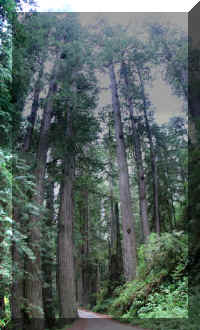
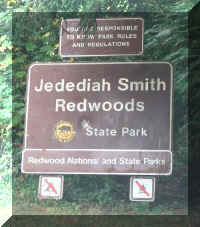 The
Redwoods were something, among other attractions, we were looking forward to
seeing.
The
Redwoods were something, among other attractions, we were looking forward to
seeing.Redwood National and State Parks - 2008 . . .
during our travels in the
Pacific Northwest
Updated: 11/30/08
Jedediah Smith Redwoods State Park Stout Memorial Grove . . .
Walker Road . . . Back to the main road . . .
Jedediah Smith Redwoods State Park

 The
Redwoods were something, among other attractions, we were looking forward to
seeing.
The
Redwoods were something, among other attractions, we were looking forward to
seeing.
The ranger at the Visitors Center in Crescent City strongly suggested we take the Howland Hill Road to Stout Grove. She said it was her favorite location for seeing Redwoods. It was a good way to spend a rainy day.
Redwoods appeared on the West Coast of North America about 20 million years ago. The climate provides a safe haven for trees that need abundant water, little fluctuation in temperatures year around, and summer fog.
We know that after a while all trees may look the same. We will try to show you some of the unique things we saw along with trees.
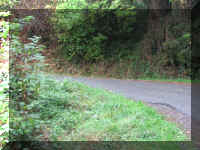
Moss grew on a lot of the trees.
Up close, they were BIG.
The term 'grove' is used to identify sections of the Redwood forest that were donated to the parks. Plaques or signs of various sizes and designs are used for the designation.
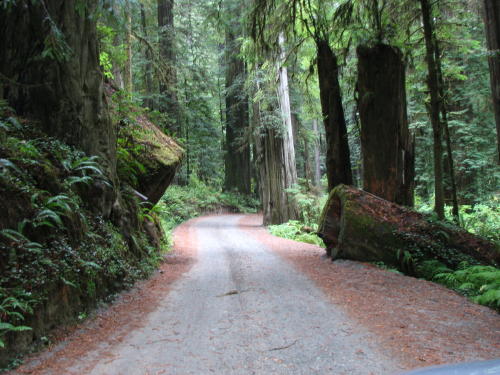
What is the difference between BIG and HUGE?
Some of the groves were more significant than others. The Stout Grove had a maintained 1/2 mile long loop walking path.
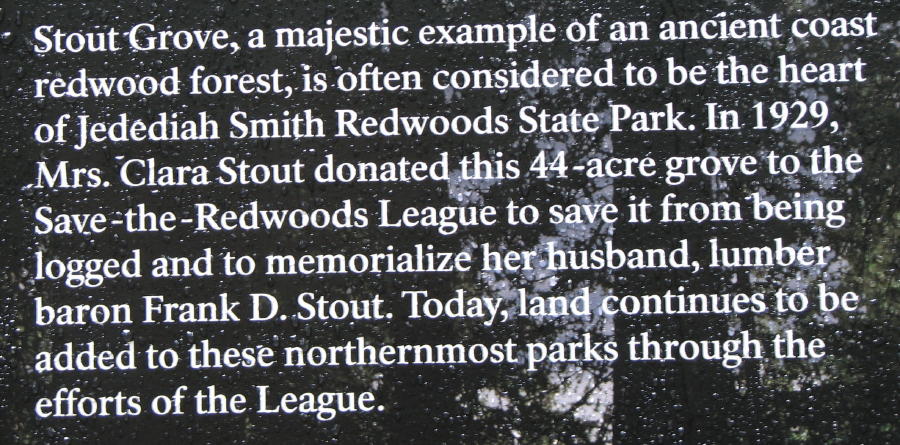
Some trunks were burned, had missing bark, hollow, bruised or have tangled bark.
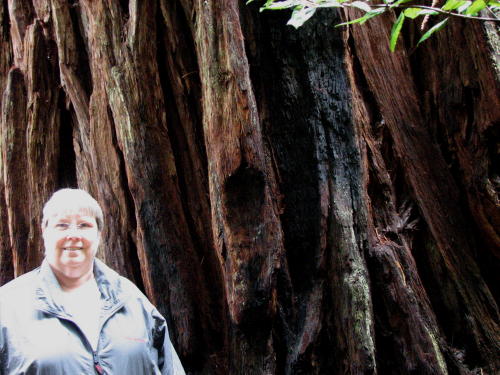 This
photograph with Mary Lou near a tree trunk provides some indication of the depth
of the bark on a Redwood..
This
photograph with Mary Lou near a tree trunk provides some indication of the depth
of the bark on a Redwood..
The exposed wood has not been varnished, it is just wet.
Ferns were very prolific.
We could not figure out why this new bench had a tube armrest.
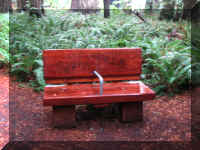
Not that the old bench needed replacement.
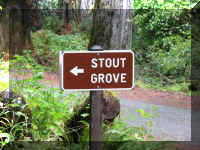
to walk in part of a huge Redwood forest.
Do you see the dog's face in the center of the frame?
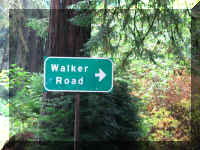
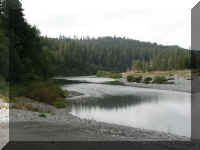
We took the right road which ended at the river.
We went back to the "Y" and took the left road. It also ended at the river.
Driving to our left a little proved to be very rough.
To the right we saw another vehicle parked on the shore across the river.
A short distance back up the road, the elevation let us see the river again, a hillside and a NPS vehicle heading for the location where we saw the other vehicle.
An old wall . . .
It was time for lunch.
Down the road from our lunch spot . . .
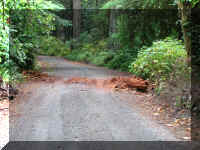
On the way back to the main road the NPS vehicle we saw earlier was heading our way. After seeing him, we saw two other NPS vehicles before we reached the main road.
We used a rest area on the main road before going back to camp.
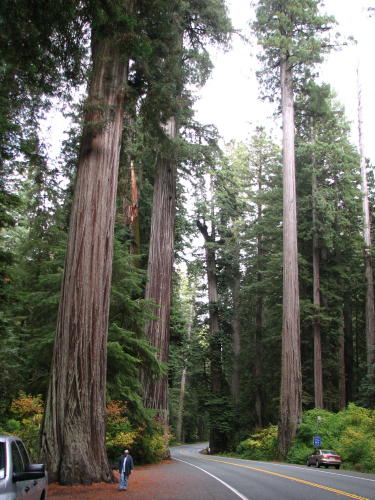
If a Redwood tree grows too close to the road, they had two solutions other than cutting it down. If it gets too close and leans over the road, cut a notch in it. Trees that grow straight, a reflector works.
We feel fortunate that we could enjoy the Redwoods despite the off-and-on rainy day. We drove through more Redwoods farther south on the Redwood Highway (US-101) on the Newton B. Drury Scenic Parkway. The Parkway is posted to the On the road in Northern California - 2008 page.
GO BACK TO > > > Pacific Northwest - 2008